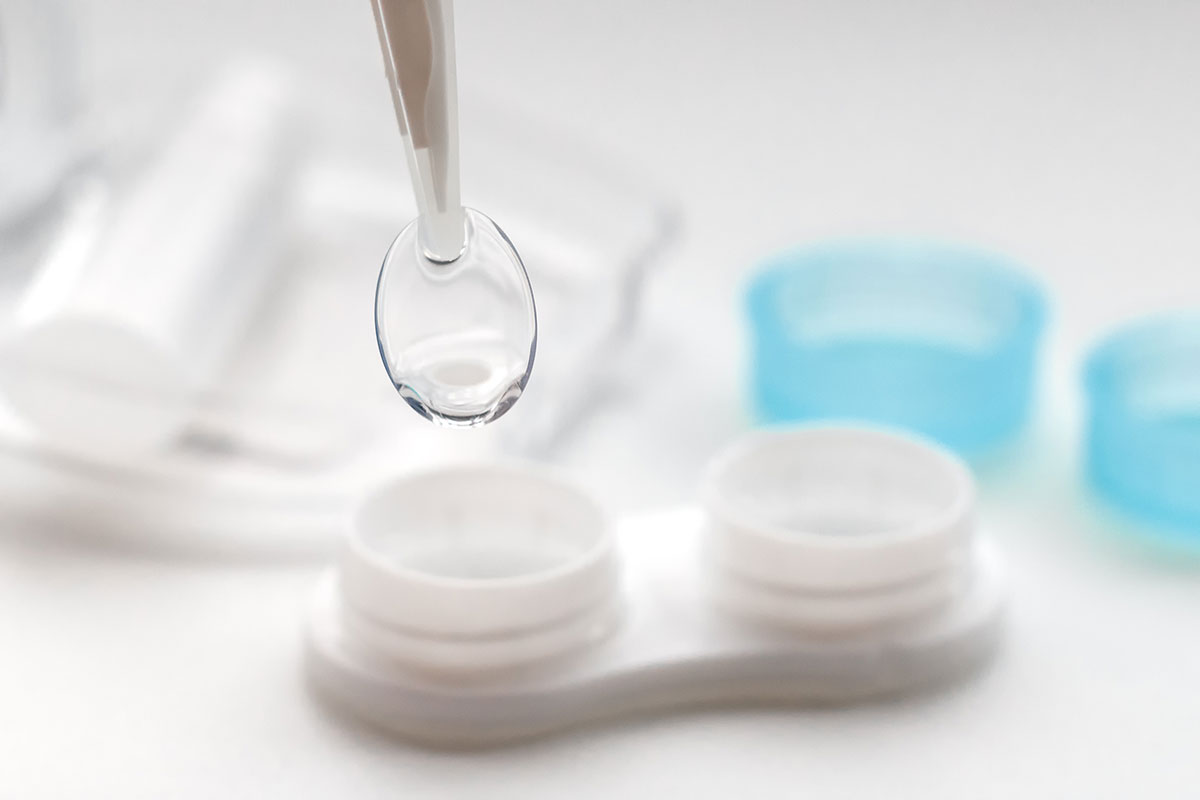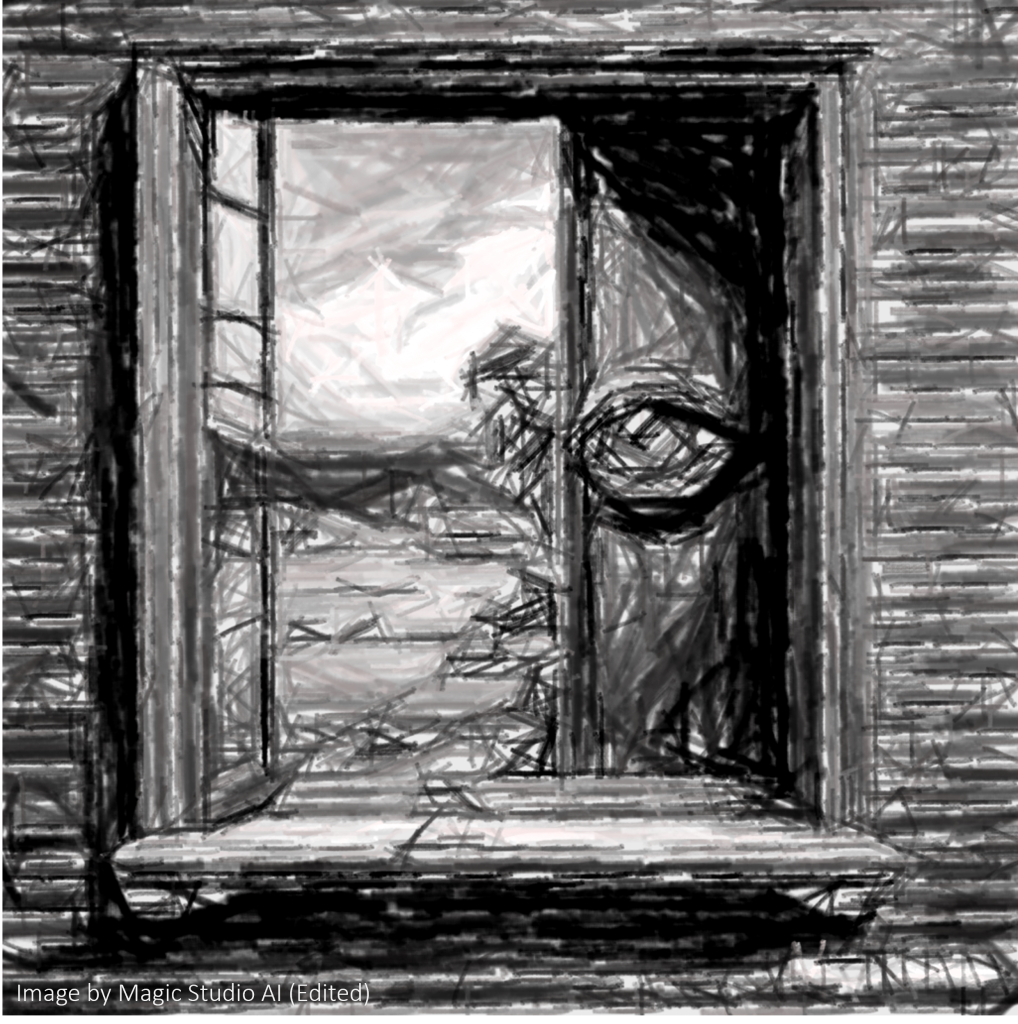Orthokeratology or Ortho-K is a vision correction method that developed in the 1990s, facilitated by corneal topography technologies. Rigid, gas-permeable and fully-customised contact lenses are worn at night to reshape an individual’s eye surface, enabling clear vision during the day without use of glasses or contact lenses. Adults might choose Ortho-K as a non-surgical alternative for clear daytime vision. In children, Ortho-K also serves as an option that may slow myopia progression. However, not everyone is a good candidate. During an optometric evaluation, several tests and measurements are taken by a qualified practitioner to determine patient suitability and design optimal-fit Ortho-K lenses.
Many city-dwellers, students, and office workers that suffer from dry, irritated eyes and struggle to wear daily contact lenses may wonder whether Ortho-K is an option for them.
In short, not only is dry eye increasingly manageable, but studies show that Ortho-K night-wear lenses can be beneficial for the eye’s surface and are easier to tolerate than normal contact lenses. Let’s briefly look into the feasibility of Ortho-K for people with dry eyes, the tests conducted before prescribing, and some alternatives to consider if the main objective is slowing a child’s myopia progression.
Can People with Dry Eyes Use Ortho-K?
Yes! Many people with dry eye disease or symptoms can comfortably use Ortho-K lenses.
Orthokeratology involves wearing specially designed rigid gas permeable (RGP) contact lenses that gently reshape the cornea overnight. This can be an excellent option for many, but people with existing dry eye symptoms may have concerns.
Dry eye disease is a condition where the eyes do not produce enough tears or the right quality of tears to keep the eye surface lubricated. For these patients, compliance with daily lens wearing can be an issue as they may experience itchiness, pain, or blurred vision from dryness. Furthermore, patients are advised and often repeatedly reminded that conventional contact lenses should never be worn at night or while they sleep. As such, individuals with pre-existing dry eyes or at high risk of the condition may feel that use of overnight hard/rigid lenses is counter-intuitive.
Ortho-K is generally considered safe for most people, including those with mild to moderate dry eye. Unlike some other types of contact lenses, Ortho-K materials are gas-permeable, meaning the eye can ‘breathe’ even though worn during sleep. A portion of adults that struggle to wear even soft contact lenses may benefit from Ortho-K as a vision correction option.1
Children undergoing Ortho-K to slow myopia progression may tolerate these better than other daytime contact lenses. Since Ortho-K lenses are worn with the eyes closed, there is minimal interaction with the eyelids. This significantly reduces any irritation that can result from lens movement during normal eye blinking, which is common with other types of daytime contact lenses. Ortho-K lenses are custom-fitted to the shape of the eye, allowing them to stay in place and move minimally during sleep. As a result, this stability reduces the sensation of Ortho-K in the eye during sleeping hours, limiting irritation to the ocular surface. In a portion of adults, research shows that orthokeratology may even improve dry eye symptoms and improve density of specific ocular surface cells.2
Even more good news: Nowadays dry eye and discomfort can be managed well with a variety of drops, supplements, and heat masks. Reducing exposure to the environmental factors that contribute to dry eye is also possible.
Young patients and their parents must note that compliance with the wear and follow-up schedule of the orthokeratology process is crucial for outcomes like slowing myopia progression. If experiencing any pain, redness, or discomfort with the lenses, do report the issues to your optometrist. We are here to help ♥
What Will the Optometrist Check First?
Before prescribing Ortho-K lenses, an optometrist will perform a range of tests to determine if your eyes are suitable for the process. This ensures that you’ll be safe and comfortable as you wear the lenses overnight. Here are some of the tests to detect dry eyes that may be performed during your first Ortho-K consultation:
1. Tear Film Evaluation
Your optometrist will assess the quality and quantity of tears in the eye. This test involves using special dyes to examine your tear film and how quickly it breaks down. If your eyes don’t produce enough tears or the tears evaporate too quickly, dry eye management may be recommended either before or alongside the start of Ortho-K treatment, depending on the severity of the dry eye condition.
2. Corneal Health Check
Your optometrist will evaluate the health of the cornea (the front surface of your eye), which is essential in determining your suitability for Ortho-K lenses. When the eyes don’t produce enough tears or when tears evaporate too quickly, the outer layer of the cornea, known as the epithelium, can become damaged, resulting in superficial punctate keratitis. In mild cases, patients may not experience symptoms, but if left untreated, it can lead to dryness, light sensitivity, and blurry vision.
A corneal health examination can also detect any pre-existing conditions, such as corneal irregularities, dryness, distortions, thinning, or scarring from past eye infections or surgeries, which could impact the effectiveness of Ortho-K or increase the risk of complications. Maintaining optimal corneal health is crucial for achieving the best visual results and ensuring ocular safety while wearing Ortho-K lenses.
3. Blinking and Lubrication Tests
Your optometrist will also observe how often you blink and assess how well your eyelids spread tear film across the cornea. Inadequate blinking or inefficient tear distribution can make wearing Ortho-K lenses uncomfortable, especially for those with dry eyes.
4. Evaluating the Severity of Dry Eye
In addition to ocular diagnostics and physical assessments, the optometrist will ask about symptoms of dry eye. This could include questions about how often you experience discomfort, how long it lasts, and any treatments you have tried. Your answers will help determine whether Ortho-K is a viable option or if another solution might be more appropriate. Either way, a plan for dry eye management can be based off these results.
What If Ortho-K Isn’t Right for You?
If your optometrist concludes that Ortho-K may not be the best option due to dry eyes or other factors, there are still various alternative contact lens options available to correct your vision if you prefer not to wear glasses. This differs depending on what the main objective of Ortho-K use is for the individual patient.
Other Types of Contact Lenses
If vision correction for patients with problematic dry eye is the main concern, your optometrist will discuss options such as scleral, hybrid, RGP daytime, customised soft, or daily disposable lenses.
Scleral Lenses
Scleral lenses are a type of contact lens that forms a fluid reservoir between the lens and the eye. Larger than traditional lenses, they rest on the white part of the eye, offering superior comfort while creating a moisture cushion over the cornea. Scleral lenses are particularly well-suited for post-surgical eyes, complex refractive errors, corneal irregularities, and patients with severe dry eye disease. In recent years, they have become increasingly popular among eye care practitioners due to their ability to provide stable and sharp vision, along with their other benefits.
Hybrid Lenses
Hybrid lenses combine the advantages of rigid gas permeable (RGP) lenses and soft contact lenses. The central part of the hybrid lens is made from RGP material, offering high clarity, while the surrounding soft skirt provides comfort similar to that of a soft lens. They serve as an excellent alternative for patients who find RGP lenses uncomfortable and those dealing with corneal irregularities and/or dry eyes.
RGP Lenses
Rigid Gas Permeable (RGP) lenses can correct a wide variety of refractive errors, including myopia, hyperopia, astigmatism, and presbyopia, available in designs such as front toric, back toric, and bifocal. The RGP lens material allows for higher oxygen transmissibility, enabling long hours of daytime wear. They offer an affordable alternative for patients with complex refractive errors who seek clear and stable vision.
Customised Soft Lenses
Customised soft lenses are designed to match the unique curvature and size of your eyes, ensuring optimal lens movement throughout the day. They can be crafted from high oxygen-permeable materials and are better at retaining moisture than traditional soft contact lenses, helping to keep your eyes hydrated and healthy. They offer a great alternative for patients who cannot wear disposable soft lenses due to the limited power range available in the market, and they can be customised to correct higher levels of refractive errors.
Disposable Soft Lenses
Disposable soft lenses are easy to use, eliminating concerns about poor hygiene and infection risk from insufficient cleaning. Their thin design enhances comfort, making them a good option for dry eye patients who don’t necessarily need to be spectacle-free. With the wide variety of disposable soft lens options available, differing in technology, material, base curves, and diameter, it is crucial to consult an optometrist for a contact lens evaluation to find the most suitable option for your eyes.
Alternatives for Myopia Control
If the main objective for Ortho-K use is slowing myopia progression in children and adolescents, there are several alternatives. Certain soft lenses as well as spectacles control myopia, as well as atropine eye drops (administered by a doctor) that may be added in a combination theraphy. Changes to lifestyle may also be complementary to the chosen intervention.
Soft Contact Lenses for Myopia Control
There are now specially designed soft contact lenses aimed at slowing the progression of myopia. These lenses are worn during the day and may be more comfortable for individuals with dry eyes as compared to Ortho-K. Your optometrist can discuss which myopia control lenses might be right for you.
Lifestyle Adjustments
Managing myopia progression with a healthier eye habits and lifestyle is another option, although this will have significantly less impact than clinical interventions. Increasing time in natural light,3 views of greenery,4 and reducing screen time as well as limiting extensive periods of close, focused work seem to help slow myopia progression.5 Sleep could be another factor. Although data on this is inconclusive,6 there are many benefits to switching devices off and getting a good night’s sleep instead.
Additionally, using lubricating eye drops and practising good eye hygiene can moderate dry eye risk and symptoms. These strategies may reduce incidence of another common problem in modern populations: Computer vision syndrome.
Take Action for Healthy Eyes
If you’re considering Ortho-K, myopia control, or other vision correction options and have concerns about dry eye symptoms or disease, the best first step is to schedule a comprehensive eye exam. An optometrist will evaluate your eye health and guide you through the safest and most comfortable options for managing your condition.
At Stan Isaacs, we’re here to help you find the right solution for your eye care needs. Whether it’s Ortho-K, scleral lenses, or lifestyle tips for managing dry eyes, our team is dedicated to providing personalised care. Book an appointment with us today to discuss the options that work best for you and your eyes.
[1] Duong, K. et al. (2021). Treating uncomfortable contact lens wear with Orthokeratology. Eye & Contact Lens: Science & Clinical Practice, 47(2), pp. 74-80. DOI: 10.1097/ICL.0000000000000690
[1] Carracedo, G., Martin-Gil, A., Fonseca, B., & Pintor, J. (2016). Effect of overnight orthokeratology on conjunctival goblet cells. Contact lens & anterior eye : the journal of the British Contact Lens Association, 39(4), 266–269. https://doi.org/10.1016/j.
[1] Muralidharan, A. R., Lanca, C. et al. (2021). Light and myopia: From epidemiological studies to neurobiological mechanisms. Ther Adv Ophthalmol, 13, 1–45. https://publications.aston.ac.uk/id/eprint/45026/1/Light_and_myopia.pdf
[1] Akerman, D. (2021, November 1). Is Myopia Prevalence Related to Outdoor Green Space?. Review of Myopia Management. https://reviewofmm.com/is-myopia-prevalence-related-to-outdoor-green-space/; Zhang, C., Wang, C., Guo, X., Xu, H., Qin, Z., Tao, L. (2023). Effects of Greenness on Myopia Risk and School-Level Myopia Prevalence Among High School–Aged Adolescents: Cross-sectional Study. JMIR Public Health Surveill, 9, e42694. https://publichealth.jmir.org/2023/1/e42694
[1] Biswas, S., El Kareh, A., Qureshi, M. et al. (2024). The influence of the environment and lifestyle on myopia. J Physiol Anthropol, 43(7). https://doi.org/10.1186/
[1] Liu, X. N., Nadulivath, T. J., Sankaridurg, P. R. (2023). Myopia and sleep in children—a systematic review. Sleep, 46(11), zsad162. https://doi.org/10.1093/sleep/








